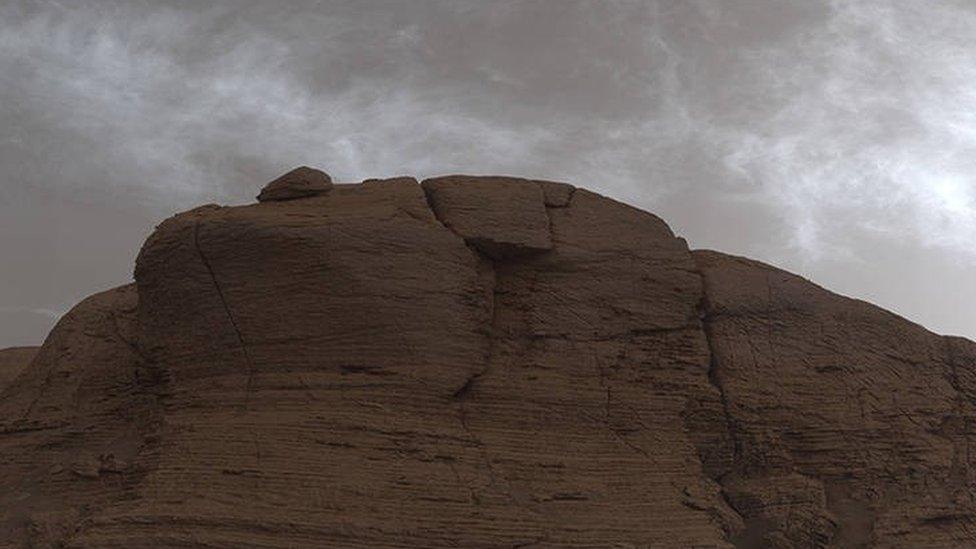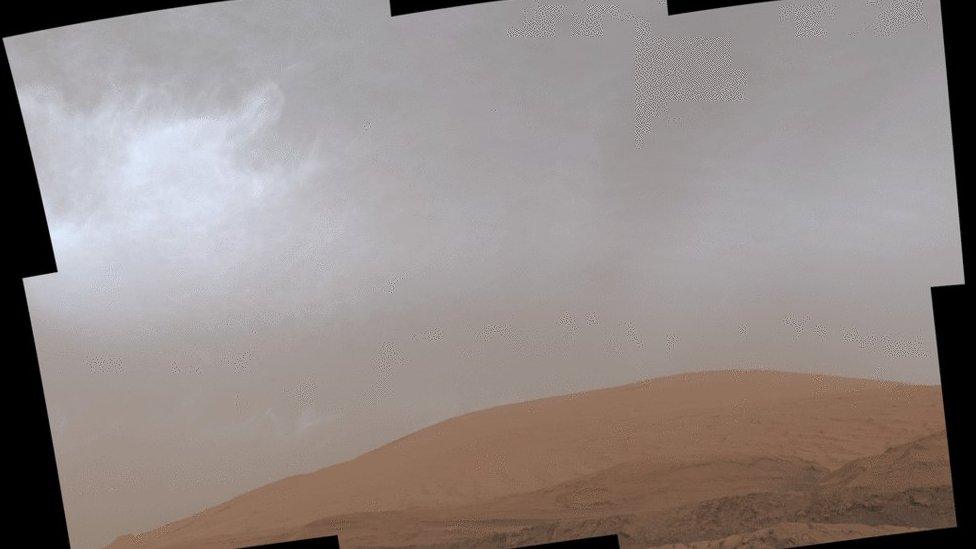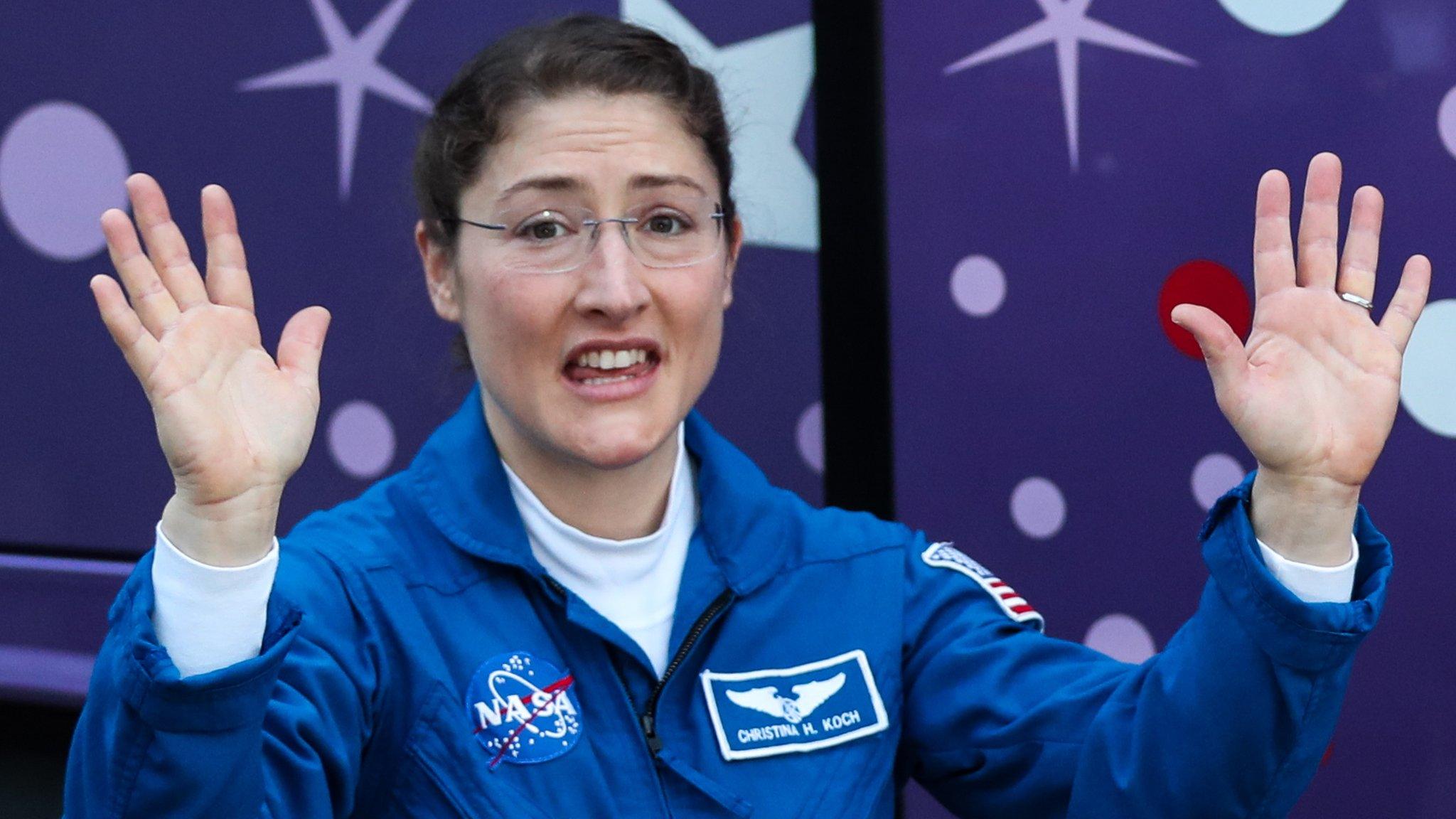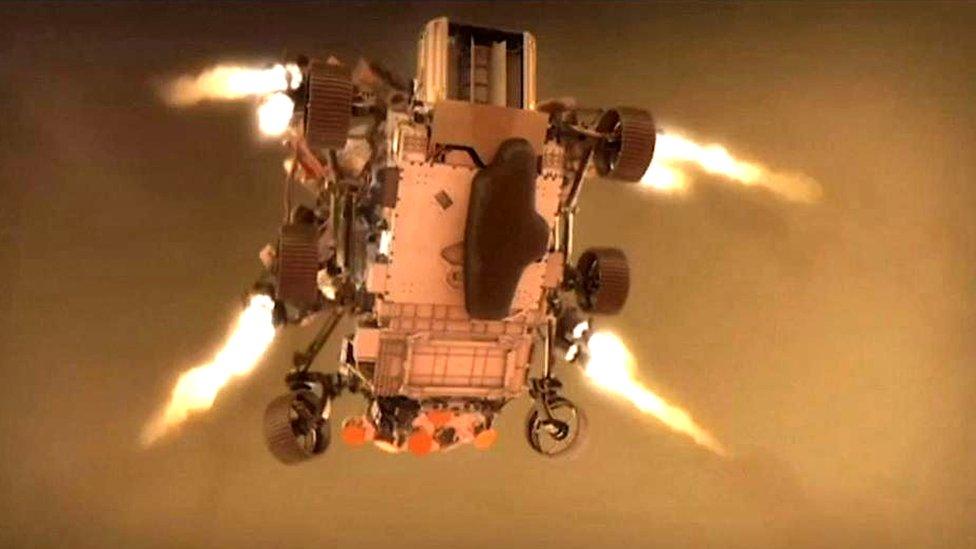Mars: Nasa find shining clouds on the Red Planet
- Published
- comments

Ever heard of shiny clouds on Mars? No, us neither! The Red Planet has a lot of wind and dust storms but it isn't known for its clouds.
Well, the Curiosity team at Nasa have now captured clouds on Mars - including some special 'shiny' ones.
Cloudy days are rare in the thin, dry atmosphere of Mars but one full Martian year ago - that's two Earth years - the science team discovered clouds forming over Nasa's Curiosity rover earlier than expected.
Normally clouds are found at Mars' equator in the coldest time of the year, when Mars is the furthest from the Sun in its orbit.
So, this year they made sure they were ready to document these early clouds.

The clouds as captured by a special Curiosity rover camera
Nasa describes the images they got as "wispy puffs filled with ice crystals" and added "more than just spectacular displays, such images help scientists understand how clouds form on Mars and why these recent ones are different."
The team have discovered that these early arrival clouds are at higher altitudes than normal.
Most Martian clouds hover about 60km (30 miles) in the sky and are made of water ice. But these new images show the clouds at a higher altitude where it is very cold, which could mean they are made of frozen carbon dioxide or dry ice.
Mars is the fourth planet from the sun
It is a dusty, cold, desert world with a very thin atmosphere
It is the only planet Nasa has sent rovers to - they currently have two rovers (Curiosity and Perseverance) exploring the surface of Mars

'Shiny' clouds on Mars
Nasa's Curiosity Mars rover also spotted these 'mother of pearl' clouds: "If you see a cloud with a shimmery pastel set of colours in it, that's because the cloud particles are all nearly identical in size," said Mark Lemmon, an atmospheric scientist with the Space Science Institute in Colorado.
Mark added that these clouds are some of the more colourful things you can see on the Red Planet.
- Published28 May 2021

- Published14 February 2020

- Published18 February 2021

